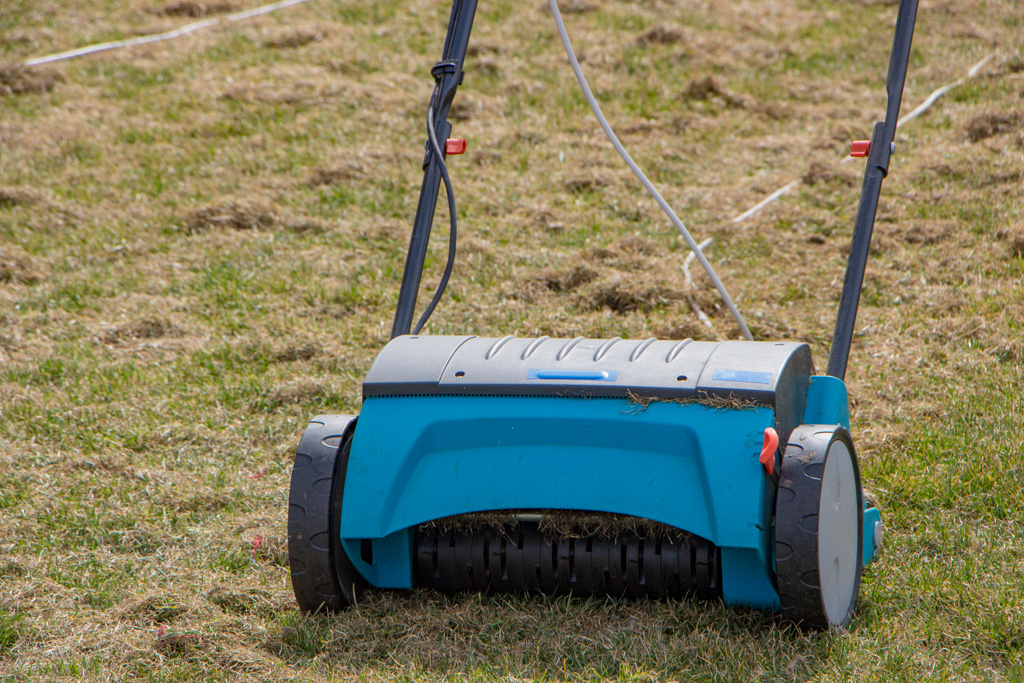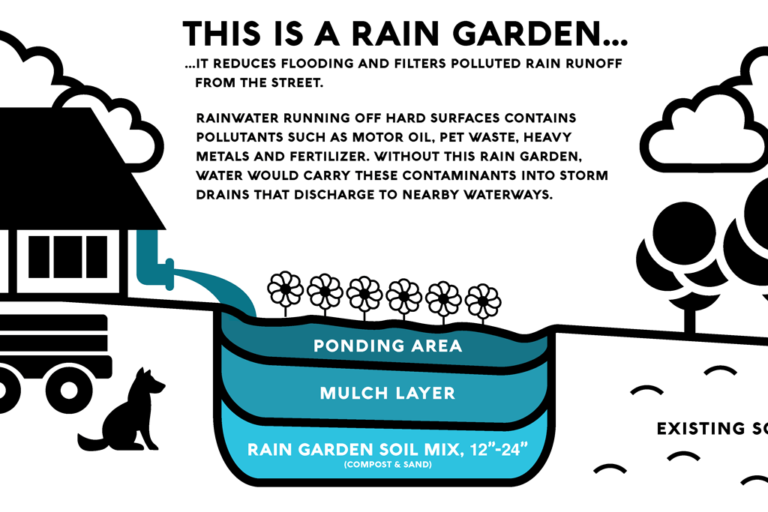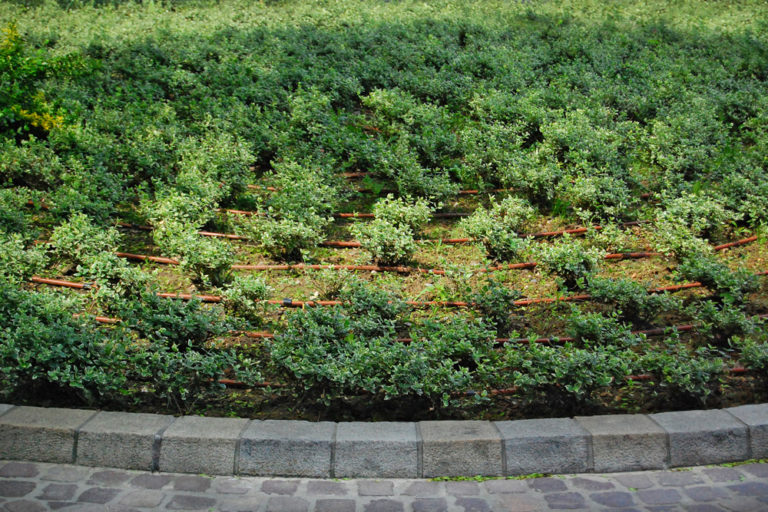Take Action: Landscape Improvement
Aerate Soil
Aerating soils improves irrigation entering the soils & prevents water pooling that leads to runoff
Aerating your lawn is a simple way to allow oxygen and water into compacted soils. Properly aerated soil reduces water pooling and runoff. Additionally, aerated lawns are healthier and can require less water to maintain overall as water gets into the soil where plants can use it. A win-win solution!

Who Should do This?
Anyone who has a lawn can do this action! Typically, aeration is performed once per year. If you have a small lawn, you can do it yourself, such as by renting a plug aerator. If you have a larger lawn, you may want to hire professional help.
How Long will it Take?
It depends on the size of the lawn and the method. Small lawns can take an hour and larger lawns may take a day. When to aerate your soil depends on the climate and type of grass: Cool-season grasses, such as fescue, bluegrass or rye, should be aerated from August through October and warm-season grasses, such as Bermuda, Zoysia or St. Augustine, should be aerated from April through June. Click here to find out your lawn type.
How Much does it Cost?
Cost varies by aeration method you choose; plug aerator rentals vary by company and location, starting around $80 per day for a compact version. Professional help will likely cost more.
What are the Benefits?
- Improves irrigation efficiency
- Improves lawn health
What is needed to get started?
- Identify your lawn type
- Aerator
Did You Know?
Compacted soils make it difficult for grasses and plants to get the oxygen and water they require. Aerating allows oxygen and moisture into the soil and allows roots to expand. If your lawn is highly trafficked and water pools at the surface, aeration is likely needed to maintain optimal lawn health. To check to see if your lawn needs aeration, dig out one square foot of grass 6-inches deep. Examine the grass roots and if they do not extend more than 2-inches into the soil, your lawn should be aerated. You do not need to aerate a lawn that has been seeded or sodded in the last year.
Resources
Video on soil aeration from the EPA: click here.
More information on how to aerate soil: click here.
UC Guide to Healthy Lawns – Aerating: click here.



